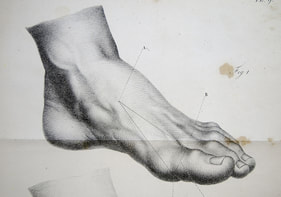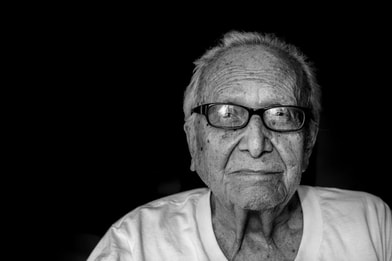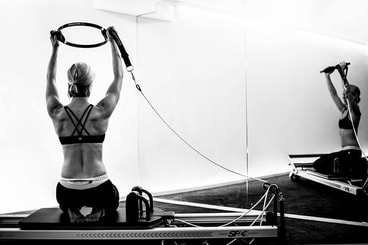 Traditional Chinese Medicine, a medical system that has been around for nearly 3,000 years, views the body differently than modern medicine. When the body is broken down to its core, its tiniest molecules can be classified as energy. This means every element of the universe resides within the human body, to some degree. And every organ has its own properties and energies that must remain balanced for the body to function properly. The energies within the body must be a perfect synergy of elements. This allows for homeostatic balance, biochemical balance, longevity and harmony between the body and mind. The food we put in our mouths can either fuel us or slowly kill us. By knowing which body type we fit into based on the five elements, wood, fire, water, earth or metal, we can then eat a balanced diet that will allow us to remain healthy and strong throughout our lives. Here are some guidelines that may be helpful. The wood element body type tends to be slender with a long face, body and fingers, similar to a tree. The liver, gallbladder, tendons, ligaments and sinews are all controlled by the wood element. Recommended foods for the wood body type include anything sour, and green foods with stalks. Make sure to exclude alcohol, processed foods, high fat foods and most dairy, as these foods can restrict the free flow of energy and blood, while wreaking havoc on the function of the wood element. The fire element body type tends to possess a pointy nose, chin and top of the head. The fire element body is shaped like a torch, pointed on the top, narrow at the bottom and flared in the middle. The fire element handles the circulatory, glandular and immune systems. This includes the heart, small intestine and the lymphatic system. Recommended foods for the fire body type include bitter foods, grains, vegetables, dark leafy greens, beans and seeds. These foods tend to keep the fire at bay, avoiding an overabundance. Foods to avoid include chocolate, salt, meats, stimulants and hot spices. The water element body type has a tendency towards “thickness.” The face tends to be large and round, with a wider base, while the body is full and chubby. The water element rules the kidneys, bladder, bones, nerves and teeth. Recommended foods for the water element body type include pure water (not what is contained in juices, coffee, etc.), blue, purple and black foods, root vegetables and seaweeds and seafood. Foods to avoid include sugars, alcohol, caffeinated drinks, frozen and excessively raw foods. The earth element body type tends to be short in stature, with a short body, short fingers and neck. The face tends to be square, while the body is pear shaped with rounded buttocks. The earth element rules the digestive and structural systems within the body. This includes the stomach, spleen and muscles. Recommended foods for the earth element body type include root vegetables, leafy greens and light proteins such as legumes and fish. Foods to avoid include refined carbohydrates, dairy, iced drinks and processed foods as they gunk up the digestive system and overtax the spleen and stomach. The metal element body type tends to have defined facial features and broad, square shoulders. However, their features tend to be thin in nature, such as thin lips and eyelids. The metal element rules the intestinal, respiratory and skin systems, as well as assisting with the immune system. Recommended foods include those that have a dispersing effect and promote energy circulation. Foods sour in nature are best for this body type. Also foods high in minerals like leafy greens and vegetables are good choices. Foods to avoid include dairy, red meat and bitter foods. Once we know our elemental body type, we can effectively nourish our body without wreaking havoc. Want to know more about optimizing YOUR body according to Chinese Medicine? Book online using the links above or below or contact us for more information!  Problems with pain management are almost always the primary complaint in patients suffering from Ehlers-Danlos Syndrome (EDS). Much of this pain is musculoskeletal in nature such as a sprain, tendinosis or joint subluxation. But often our patient's pain complaints are less clear. This pain can be described as a burning, stabbing pain that moves throughout the body inexplicably and without identifiable causes. Recent research by Cazzato, et al. has demonstrated that patients with EDS have a very high chance of manifesting small fiber neuropathy in the sensory fibers of their skin. Neuropathy is the inflammation or death of nerve fibers in the outer-layers of our bodies. This is commonly seen in diabetic patients with changes in their blood chemistry. However it has recently been identified that more than 90% of investigated EDS patients demonstrate evidence of localized small fiber neuropathy. This has commonly been identified and treated in the fibromyalgia populations with medications such as Neurontin/Gabapentin, Amitriptyline, Pregabalin and Cymbalta. This type of pain would be classified as neuropathic pain and is very different from mechanical type musculoskeletal pain. Pain medications like NSAID, opioids and muscle relaxants that are prescribed for musculoskeletal pain are often unsuccessful for treating neuropathically induced pains. The Cazzato study reported 19 of 24 EDS patients complained of moderate to severe symptoms consistent with neuropathic pain. When their research patients were examined via skin biopsy all 24 demonstrated findings consistent with small fiber neuropathy. When discussing pain medication with your providers it is important to identify what the underlying pain generators are in order to pick efficacious medicines and interventions. If your pain is a diffuse burning discomfort that bounces around the surface levels of skin, fascia and muscle you may benefit from a medication specifically targeting neurogenic pain. Not sure where you pain is coming from or why? That is a great reason to come see a Physical Therapist who can manually test your body and evaluate your symptoms to provide direction and advice about the best course of action. As a Doctor of Physical Therapy with advanced training it would be my pleasure to evaluate and assess what is going on to help you find relief and develop a plan of action that will lead to better quality of life. Email me or call 360-952-3074 to request an appointment today for more information. ~Brian Kitzerow, DPT, CMPT, OCS

Acupuncture is an effective method of treatment for seniors struggling with hypertension. The reasons are manifold. Doctors want to reduce medical waste and find more effective ways to actually treat disease, instead of masking symptoms. More medical professsionals and scientists are also realizing that holistic treatments offer effective, non-intrusive health solutions for many conditions. In addition, elderly people have delicate body systems. Many factors like diet, activity and emotional balance affect their blood pressure rate. Modern medicine also comes with a myriad of side effects.
Reducing Medical Waste There’s no doubt the healthcare crisis in America is largely due to spending waste. Insurance carriers and patients spend money on unnecessary expenses and procedures. Yet the healthcare they receive does little to heal their conditions. To reduce waste, physicians are starting to call for better quality healthcare; and cutting out unnecessary pre-op tests, excessive care visits, and over-medication. Scientific research is also starting to show that when you add round-the-clock safety monitoring and body-balancing holistic treatments to a patients' healthcare regimen; overall medical care begins to produce more measurable results. Ups and Downs Everyone’s blood pressure rate fluctuates throughout the day. Seniors are no exception. During the day your bp is higher than when it’s resting at night. It rises after a big meal or when you’re experiencing stress. Some seniors are at significant risk for developing depression and other emotional conditions because of the drastic changes they experience as they enter their senior years. Many seniors also suffer from food insecurity because their appetites change due to stress and emotional trauma, poor cognition and simply lack of hunger. In addition to causing hypertension, malnutrition can contribute to health conditions like heart disease, gum disease, asthma, psoriasis and lifestyle limitations. The only way to get an accurate reading at a doctor’s office is for patients to rest for 10 minutes before the doctor takes the reading. Many doctors then take a second standing reading as well. Sometimes doctors ask patients to take readings throughout over a period of 24 hours if they suspect issues like:
What Makes Acupuncture Effective? Because blood pressure is something that can fluctuate so much, medical professionals are finding that prescribing strong medicine isn’t an ideal solution. In addition, doctors readily admit that most of the popular medicines on the market have undesirable side effects. Just like blood flows throughout the body, energy flows as well throughout body channels called meridians. Acupuncture stimulates these meridians. Each meridian communicates with the brain and corresponds with a body system governing an important function like pain perception, blood pressure, the cardiovascular system and adrenaline response. Strong scientific research backs the statement that acupuncture is an effective treatment for hypertension and many other conditions. Doctors have even performed surgery with no pain medication other than acupuncture. ​By freelance contributor Sally Phillips  www.runwaypilates.com www.runwaypilates.com We all know that there are several benefits that occur from participating in regular exercise. But is exercise specifically helpful for the hypermobile type Ehlers Danlos Syndrome (hEDS) population? And if so, how and why? We have good evidence that exercise is helpful for many components of our lives. It helps with hormonal control of estrogen, testosterone, progesterone and cortisol. It improves sleep cycles and the hormones involved in regulating our sleep patterns. It helps improve muscle mass and prevents the loss of bone density. Exercise participation is strongly correlated with reductions in stress, anxiety, and depression, and improvements in mood and the sense of well-being. Exercise is linked with improvements in coordination and decreases in fall risk. Improvements in cognition, focus, and memory are also linked with exercise participation. There has been strong evidence demonstrating that unstable joints are improved with exercise and that exercise can reduce daily pain levels. As you may or may not know, EDS is a connective tissue disorder. As connective tissue is widespread throughout the body, EDS has wide-ranging effects. Joints are less stable and have a higher incidence of injury and subluxation. Balance (or proprioception) is reduced raising the incidence of falls. Bone density can be effected. Muscle strength is commonly lower in this population (which some researchers have connected with joint proprioception deficits and others with fear of movement). Dysfunctional movement patterns are adopted with impaired coordination. And many different types of pains are experienced. But is exercise beneficial for patients with joint hypermobility syndrome (JHS) and hEDS? Research is suggesting yes for many reasons. Kemp looked at young patients over a six-week exercise course in one of two groups. One group had a generalized strength and conditioning program, and the other group had a more focused joint stabilization exercise program. Both groups demonstrated decreases in pain levels and functional assessment (roughly 30% improvement!) but the focused group also demonstrated more parental perceived functional gains. Studies by Sahin, Pacey, and Celenay all found similar responses with improvements in both function and comfort. A systematic review (assessment of all the available literature that the authors can find) in 2014 also found evidence for the use of balance retraining based exercises. There is also limited evidence that just like hEDS, classical EDS (cEDS) responds well to exercise. Moller looked at three cEDS patients who were treated with “heavy” strength training 3 days per week. Measurements of the patellar tendon demonstrated improved strength of the tendon connective tissues from 1795 N/mm to 2519N/mm (>70% increase in strength). Energy levels and perceived strength were both improved in all subjects. And even though these exercise routines were very intensive, pain levels did not increase at the end of the study for 2 of the 3 subjects and were actually lower in the third subject. In conclusion, the research is currently very supportive of exercise to improve function and comfort in the hEDS, JHS, and cEDS populations. It appears that there are better results from emphasizing trunk stabilization and balance based exercises, but all types of exercise studied showed improvements. It can be very helpful to be treated under the supervision of a physical therapist to oversee a controlled, graded progression of your program, as well as to address existing injuries with manual interventions as they interfere with your exercise program. Clinical experience suggests that exercise is the key intervention to return freedom, function and comfort in your life. Though connective tissue may be lax, muscle remains responsive to exercise and strength needs to be emphasized to compensate for ligamentous laxity. Do or someone you know suffer from EDS? Do you suspect but are unsure? Considering coming to All Ways Well for an assessment from an experienced Physical Therapist. Email me questions or request an appointment online today. ~Brian Kitzerow, DPT
|
AuthorsRebecca M H Kitzerow is a Licensed Acupuncturist practicing in La Center, Washington. With over a decade of experience she has won 10 Nattie consumer choice awards from Natural Awakenings Magazine since 2014. Archives
July 2024
Categories
All
|
Photos from Hey Paul Studios, BeGreen_Studio, Pawel Pacholec, 1950sUnlimited, toulupaliaqaz, Joelk75, OnTask, Robert Gourley, cnu_sports, Mitya Ku, wuestenigel (CC BY 2.0), FootMassagez, 401(K) 2013, Mariana Heinz, @EdwardTerry, fishhawk, liverpoolhls, torbakhopper, Boemski, dolomitibl, Driscolltheque, Dave n Laura, Vaping360, MVWorks, Life Mental Health, MVWorks, mikefats, Scot Nelson, jfl1066, wZa HK, ruurmo, Guadalupe Cervilla, Army Medicine, GViciano, torbakhopper, adrigu, Saulo Cruz, Ben Cumming, marniejoyce, kcxd, JasonCorey, kanenas.net, Live to Create Photography, gm.esthermax, Unique Hotels Group, Zenspa1, mysiana, Tobias Lindman, Leader Nancy Pelosi, Kristoffer Trolle, swanksalot, Bill Selak, Parker Knight, stimpsonjake, Gedankensprudler, SuperFantastic, tonynetone, marniejoyce, JeepersMedia, Illusive Photography, 'Ajnagraphy', Iban Torras, scotted400, gtall1, dvanzuijlekom, BPPrice, Skley, torbakhopper, Renato Ganoza, anka.albrecht, QUOI Media, Public Domain Photos, Instant Vantage, Victor Tongdee, Free Grunge Textures - www.freestock.ca, sportEX journals, Nadja Tatar, angela n., marniejoyce, MVWorks, Karolina Kabat, Thomas Fisher Rare Book Library, UofT, ginnerobot, tracilawson, haven't the slightest, My Photo Journeys, Pierre Willemin, Florena_Presse, SuperFantastic, colindunn, zzkt, TraumaAndDissociation, ER24 EMS (Pty) Ltd., shixart1985 (CC BY 2.0), marniejoyce, Tomás Fano, freestock.ca ♡ dare to share beauty, Archives New Zealand, Jaykhuang, airdrie.m, Go-tea 郭天, OnTask, wuestenigel, focusonmore.com, Disney | ABC Television Group, Andrew Gustar, Didriks, ConstructionDealMkting, charlywkarl, barnimages.com, Lel4nd, runwaypilates, michaelstephanfotografie, McLevn, TraumaAndDissociation, eLife - the journal, Lars Plougmann, wuestenigel, shixart1985, boviate, davis.steve32, kevin dooley, @the.photoguy (insta), frederic.gombert, Feathering the Nest, Victor Tondee, shixart1985, wuestenigel, Joe K Gage, kennethkonica
 RSS Feed
RSS Feed
